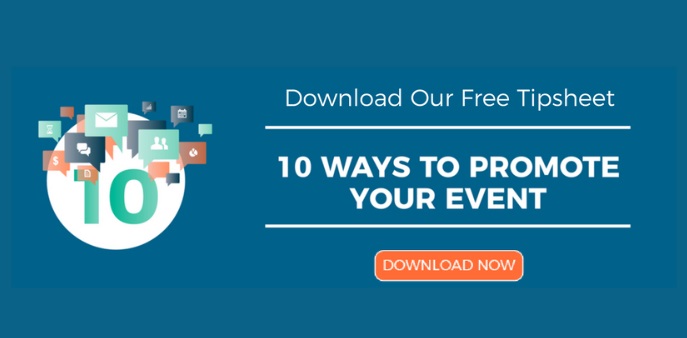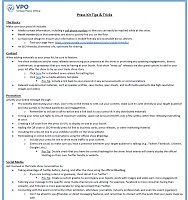
Originally posted on PR Newswire’s Beyond PR blog: http://www.prnewswire.com/blog/trade-show-marketing-tips-for-first-time-exhibitors-17112.html
Exhibiting at your first trade show can feel a lot like the first day of high school.
The bell rings, everyone else seems to know where they’re going, and you’re not even sure you’re in the right building.
It’s easy to get overwhelmed, especially if you’re a small company at a big show.
As soon as you register for an event or sign a contract to exhibit, the mountain of tasks looms – from booking your travel and designing your booth to planning your marketing and sales strategies.
Your palms start to sweat as you wonder if (and how) it will all get done. Fortunately, there are things you can do to help navigate the chaos.
Follow these tips and you’ll get everything done – all before your first class.
The early bird gets much more than a worm.
It’s important to register as early as possible for a trade show. You’ll not just cut down on stress, you may also cut down on costs.
The sooner you start planning, the more likely you can take advantage of early bird discounts. The money you save here can then be directed into other show expenses.
After you’ve booked an event, make a note of all the deadlines you need to adhere to and set calendar reminders. Some show organizers will even provide an exhibitor checklist that recommends when different tasks should be completed.
Read every email and do your homework.
After you register for a show, the emails will start rolling into your inbox. Event organizers often partner with outside vendors to provide free or discounted offers – like special hotel rates, coupons for area restaurants, free promotion opportunities, and more.
Don’t necessarily judge these emails by their subject line. Although some may seem like an unrelated sales pitch, they could be of value to your company. Take a look before moving them to the trash bin and remember to check your spam folder so you don’t miss any important deadline reminders.
You can also contact the event organizer to ask whether they are offering any pre-show webinars for exhibitors.
Larger shows with a lot of moving parts will often host informational sessions to ensure exhibitors have everything they need. Look for a webinar schedule and ask your show contact whether an archived recording will be available if you can’t attend.
Know your booth number and use it.
Your booth number is what attendees will use to find you. Make sure that you and they know what it is.
If your exhibitor packet doesn’t include your booth number, take a look at the floor plan on the trade show’s website. Find your company name and the booth number listed with it. If you still can’t locate your booth, contact the event organizer.
Once you have your booth number, include it in all of your communications. Forgetting to include it is like inviting friends to a party without an address.
Design your booth strategy for conversions.
Event attendees have a lot of booths to visit. Make their lives on the show floor as easy as possible.
A visually appealing and interactive booth design will set a strong foundation for success. However, don’t forget your strategy for converting these visitors into qualified sales leads.
Establish a system ahead of time for collecting prospective customers’ information and appoint specific people to follow up on any notable conversations you have in the booth.
Waiting until after the event to place these leads into your marketing program could cause you to lose out on the show’s momentum.
Don’t forget about pre-event marketing.
Of course, all this prep will go to waste if no one shows up at your booth. While pre-show marketing may not seem very glamorous, it is essential to meeting your event goals.
In her blog post Trade Show Marketing: What to Do Before the Show, Sarah Leung states that 70% of event attendees decide on which brands and booths they’re going to visit before even setting foot on the trade show floor. On the other hand, only 10-15% of trade show exhibitors invest in pre-show marketing efforts.
When planning out your marketing strategy, use a multi-channel approach that takes your different audiences’ preferences into consideration.
For instance, if your goal is driving prospective customers to your booth, consider publishing a couple of announcements early on so attendees have time to add you to their agenda. If the goal is earned media attention, send out a media advisory to industry outlets covering the event.
A combination of online press kits, content distribution, email campaigns, social media and other marketing tactics will help ensure you reach all of the audiences in attendance. Download Gain Targeted Audience Attention with PR Newswire for more marketing tips that’ll help you make an impression that lasts.
Author Caterina Lui is a senior customer content specialist for Virtual Press Office, PR Newswire’s trade show marketing solutions division. VPO helps global event professionals, exhibitors and trade show marketing managers reach their goals through news distribution and online press kit creation. Follow Caterina at @VPOEventZone, our Twitter channel dedicated to the trade show industry.



